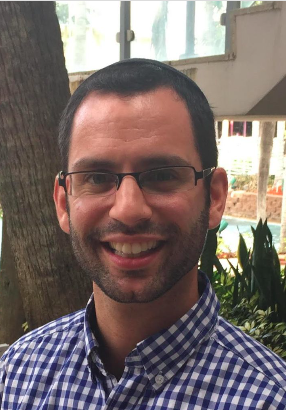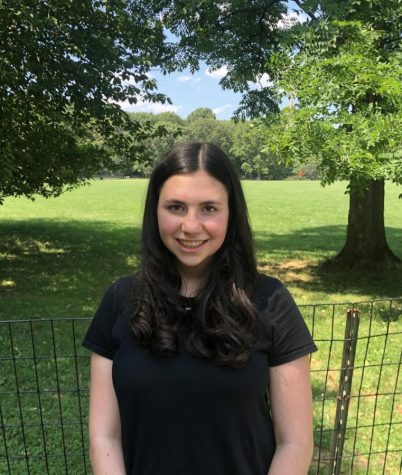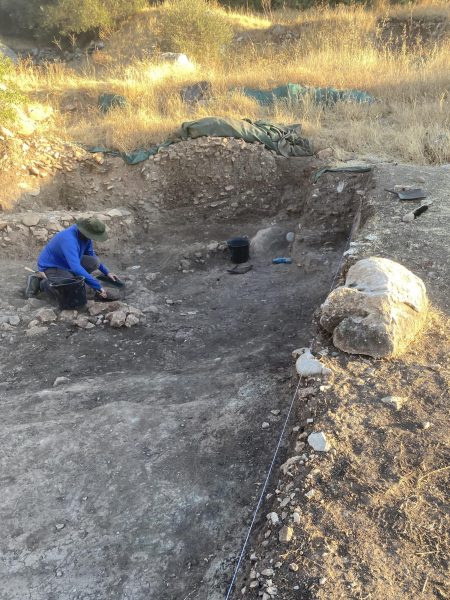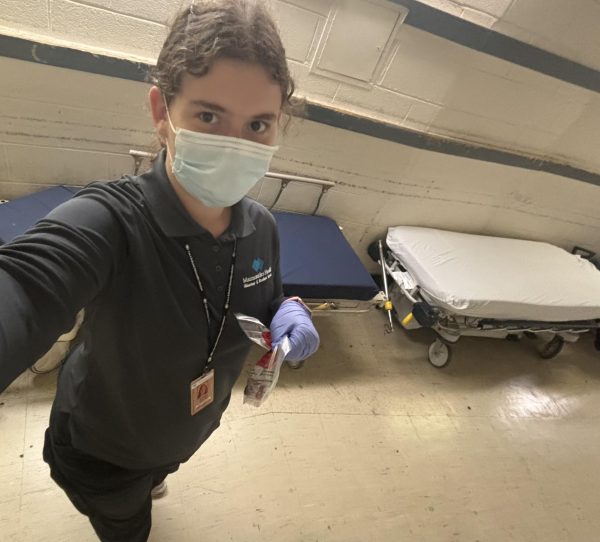Ramaz’s New Jewish Inspiration: Interview with KJ/Ramaz NCSY Director Rabbi Manu Hass

It can be easy to limit the teachings of Judaism to a set of books. It is easiest to connect to religion and God in Tanach and Talmud class. But Ramaz strongly believes that Judaism can, and should, be much greater than that. The school strives to envelop students in a life of Judaism through Shabbatonim, weekly Divrei Torah, and mishmar programs. A recent addition to these initiatives is KJ’s new NCSY Director, Rabbi Immanuel Hass. NCSY is an organization that works with teens to aid them in building strong connections to their Jewish roots.
Coming all the way from England, Rabbi Hass, who goes by Manu, has worked for NCSY in Florida and New York for the past three years. This summer, he moved to Manhattan to join the KJ/Ramaz education force. At Ramaz, Manu spends quality time with the students, working to get to know them outside of the classroom. He began an additional mishmar on Wednesdays and leads onegs on Friday nights in the city for high schoolers. In addition, Manu davens in the freshmen minyan and is joining Ramaz Shabbatonim and trips this year.
The Rampage interviewed Manu to introduce him to the entire Ramaz community and learn more about him.
Rebecca Massel: What is your official role at Ramaz?
Manu Hass: My role is to contribute to the already amazing informal Jewish education within Ramaz’s walls.
RM: How are you accomplishing this goal?
HS: The initial stages are to see how things are going by being part of what is already in place and being an observer more than a player. Davening with the freshmen, Shabbatonim, and Judaic programs outside of the classroom are all opportunities for this.
RM: Why did you decide to lead your own mishmar?
MH: My philosophy is that while we are busy improving our textual skills, we haven’t continued our developmental approach to Judaism and what it means to us on a personal level. Some of the most fundamental elements of Judaism we were taught when we were five or six, but we never really delved into them ever again. We were too busy jumping into text analysis, and by doing that, we lost some of the neshama (soul) of the Torah and were just left with the guf (body) of the Torah. The words are the guf, but what they truly mean to you and their implications, that is the neshama. That is where the real growth begins. For me, mishmar is an opportunity to open the eyes of the students to the Torah’s depth. Hopefully, that is something that permeates within the mishmars programs.
RM: Can you tell me about how you lead your mishmars?
MH: My mishmars last 45 minutes. I use the first 15 minutes to get to know the teens. My opinion is that there is something missing if you teach before you know who you are teaching. There is a famous story of the Satmar Rav. Someone came to him complaining that the shiur they were going to was supposed to start a Gemara, and it was taking ages for them to start even the first page. The rabbi said, “Why are you complaining? The rabbi is busy learning daf alef with you. He’ll get to daf bet soon.” The Gemara starts on daf bet, but daf alef is when you get to know everyone who you are learning with. Only after that can you open the book. Therefore, I start my class with a 15-minute hangout just to get to know the people in front of me. It seems that there are always new faces, which I love. After that, we begin learning. I am working with the teens to create our mishmars together and learn topics they are interested in.
RM: How has the experience of davening with the freshman been for you?
MH: I think it is a great way to get to know them. One of the advantages of being with the freshmen is that we are both new to the high school. It means that we are growing and integrating into Ramaz culture together.
RM: Why do you attend Shabbatonim and lead Friday night onegs?
MH: Judaism isn’t something that is supposed to only be when you open the text, daven, or light Shabbat candles. It is supposed to be an ever-living and ongoing organic entity that surrounds and should envelop every action we do. If that is the case, then Shabbatonim and onegs are a time to express real love for living the Jewish life.
RM: How do you structure the onegs?
MH: I like to try and connect with where students are at and what they want at that time. Because this was the first oneg of the year, we did not have any organized activities. We wanted there to be an appreciation for Shabbat and a time to bond, rather than adding something that teens feel they have to enter and learn. And secondly, knowing that the freshmen would have a Shabbaton the next week where there would be a lot of programming, I felt that I didn’t need to push the structured learning so much.
RM: Have you seen any development in the Ramaz religious connection so far?
MH: The fact that I am starting to get to know teens more than just meeting them quickly in the hallways is already a win. These interactions are the beginning of real, genuine relationships. With the teens who come to mishmar, I feel a bigger connection because we have already learned together, and nothing is more meaningful than learning with someone. Also, I was a chaperone for the Ramaz Basketball team’s LA trip to Shalhevet, and having that opportunity and time with the students allowed me to see them for who they are as opposed to just students walking around the school. For me, these are all wins.
RM: Are there any other messages you would like to share with Ramaz students?
MH: I am really excited about the great Shabbatonim, and I can’t wait to get more involved, build more relationships, and become part of the Ramaz family.

Rebecca Massel has been a journalist since lower school and is excited to be an editor-in-chief of The Rampage. She has been an active writer for the paper...


